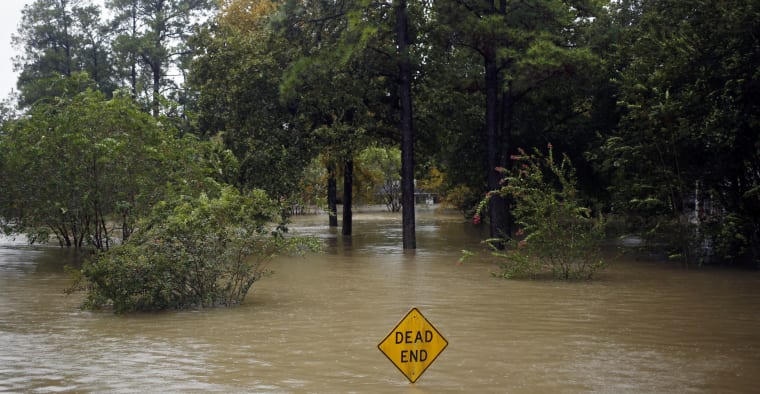Flooding Is Becoming a Common Disaster — but It’s Not Commonly Covered by Insurance

You’ve doubtless seen the devastating footage by now — because unfortunately, apocalyptic flooding is becoming something of a news staple. From whole houses floating in central Texas to underwater subway stations in New York City, torrential rainfall has been surging all over the country — a terrible trend that affects everyone in its path, including homeowners.
Let’s take a closer look.
Why is flash flooding on the rise?
Summertime means more rainfall in many parts of the Northern Hemisphere. People who live in places like Texas and Florida aren’t surprised when thunderstorms show up on a July afternoon.
But in a warming world, a mere thunderstorm can become supercharged. Because the oceans themselves are warmer than normal, so is the air above it. Warm air expands and rises, which can create low pressure systems closer to the earth’s surface — which in turn draws in more air and causes more water vapor accumulation in the clouds above. In short, warm weather is always a catalyst for thunderstorms — so a warmer planet means they can increase in both number and strength.
Indeed, many of these strong storms are reaching places that aren’t traditionally (or officially) considered flood zones, such as Hurricane Helene, which wreaked havoc on western North Carolina in late 2024. And now that NOAA has lost so much of its workforce, much of the work they were doing — tracking billion-dollar storms, for example, as well as developing a tool specifically designed to predict extreme rainfall — has been suspended.
In other words, the odds are that these extreme rain events will continue — and so will the devastation they bring to the unprepared communities in their wake.
Flooding isn’t included in regular homeowners insurance
Skyrocketing property insurance rates, for both home and auto policies, are not news — though they are directly related to the increase in costly disasters. (And they can affect the entire market, not only those who live in the path of catastrophe.)
But depending on where you live (and how closely you read your paperwork), it may be news to you that flooding is not covered in regular homeowner insurance policies. Instead, flood coverage must be purchased separately, and can cost about $818 per year on average.
Given the way new weather patterns are changing which areas are vulnerable to flooding, it may be worth looking into upgrading your plan — even if you don’t live in a “typical” flood zone like coastal Florida or Texas. You can use the Federal Emergency Management Agency’s (FEMA) tool to see if you live in a traditional floodzone. The agency also offers a National Risk Index which offers a broader view of hazards that may threaten your home.
While you’re at it, you can also shop around for a new homeowners insurance quote to ensure you’re getting the most coverage for your premiums — and consider adding comprehensive coverage to your auto insurance policy to ensure your car is covered, too.
Personal Finance Writer
Jamie Cattanach is a personal finance writer and editor with more than a decade of experience. As an NFEC Certified Financial Education Instructor, she is especially passionate making financial literacy accessible to everyone and helping readers save for major life milestones.
Jamie has written content for major FinTech players such as SoFi, Chime and Capitalize, and her work has been featured in CNBC, USA TODAY and TIME.
Expertise
- Homeowners insurance
- Auto insurance
- Health insurance
Referenced by
- CNBC
- USA TODAY
- TIME
Credentials
- NFEC Certified Financial Education Instructor
Education
- BA, English; BA, Philosophy: Flagler College, 2013
Editorial Note: The content of this article is based on the author’s opinions and recommendations alone. It has not been previewed, commissioned or otherwise endorsed by any of our network partners.
